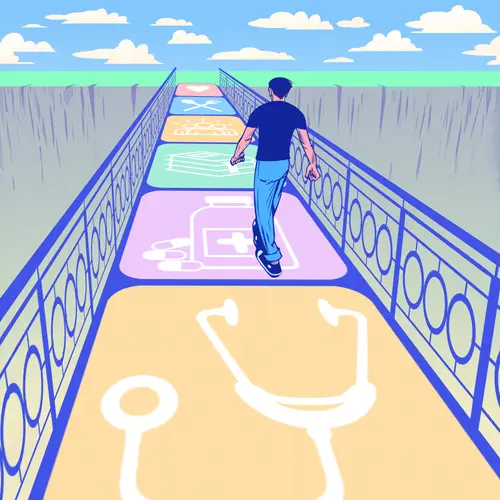Peripheral artery disease (PAD) can cause symptoms of cramping, fatigue, aching, and pain in your legs and buttocks.
These symptoms might come up especially when you are walking or exercising. They happen because your muscles aren’t getting enough blood flow to keep up with their demand for energy.
Would a massage help you feel better? And is it safe to get one? Here’s what the latest studies say about massage and PAD.
Is Massage Safe for PAD?
In general, massage isn’t considered risky. But you should always make sure your massage therapist is a trained professional. Experts also recommend taking precautions with massage if you have certain health conditions, including PAD.
Massage might make your aching legs feel better. But it’s possible the pressure and body work could loosen a blood clot.
If you want to try massage for PAD, you should check with your doctor first. If your doctor says it’s OK, be sure to let your massage therapist know about your condition.
Ask your doctor if they can recommend an experienced medical massage therapist. Some therapists may not feel comfortable treating you or will want to take some extra precautions. Your massage therapist might want to contact your doctor directly to find out if it’s OK to proceed or get tips first.
Ask your doctor if they’d be willing to talk with your massage therapist about any tips. Taking these steps are especially important if you have other conditions or risk factors for serious complications.
Before you make an appointment, ask your massage therapist if they have experience working with people who have PAD. They may be able to suggest certain techniques to help with your circulation safely. It may also be best to have shorter massage sessions that you get more often. Your therapist might want to limit time spent on your affected legs to just a couple of minutes at a time.
Does Massage Help With PAD?
If your doctor gives you the green light and you’ve talked with your massage therapist about PAD, it’s OK to try a massage and see if it helps you feel better. There’s not much evidence on massage for PAD, but several studies suggest it could help.
One study of 66 people with type 2 diabetes and PAD found that exercise and massage improved blood flow in the legs more than a placebo, which was a sham treatment with an unproven magnetic therapy device that was disconnected.
After 10 weeks of treatment or placebo, researchers noted differences between the two groups by measuring blood pressure in the ankles. A ratio of pressure measured in the ankle versus arms is one way to detect PAD, it's sometimes referred to as ankle-brachial index (ABI). If the arteries in your legs are clogged with plaque, the ABI may be lower than a value of 1. A low ABI can mean a higher risk of CHD, stroke, or progressive kidney disease.
In the study, researchers found that exercise and massage together improved measures of blood pressure and flow in the legs. But, since this study looked at the two interventions together, it’s hard to say how much massage helped. There’s a lot more evidence that exercise, such as walking on a treadmill, helps people with PAD walk farther and with less pain.
Another study by the same group looked at whether connective tissue reflex massage could help people with type 2 diabetes and PAD. In this type of massage, a therapist focuses on reflex lines where your skin is connected to deep tissue and internal organs. There's some evidence this can improve circulation.
To find out if it helps with PAD, almost 100 people were randomly assigned to a group that received massage or one that was treated with a placebo (a sham treatment with a disconnected magnetic therapy device). The researchers checked blood pressure, heart rate, and other measures right after a 15-week series of massage treatments and then again at 6 months and 1 year.
The study found a lasting difference between the two groups, suggesting that connective tissue reflex massage might help with PAD and keep it from getting worse as quickly. The researchers suggested that this might be particularly helpful for people with PAD who aren’t able to exercise. Keep in mind that this type of massage could cause some discomfort and not all massage therapists know how to do it properly.
What Else Can I Do for PAD?
It’s always a good idea to check with your doctor before you try any new type of therapy, including massage. So, ask your doctor first if it’s OK to get a massage and if there is anything you need to avoid, watch out for, or let your massage therapist know first. Your doctor may have some other ideas of what you might do to feel better and keep your PAD from getting worse.
In most cases, healthy lifestyle choices together with medication can help to slow PAD and its symptoms and are more likely to help than massage. If these steps aren't enough to improve your PAD or keep it from getting worse, your doctor might recommend other procedures, including surgery.

